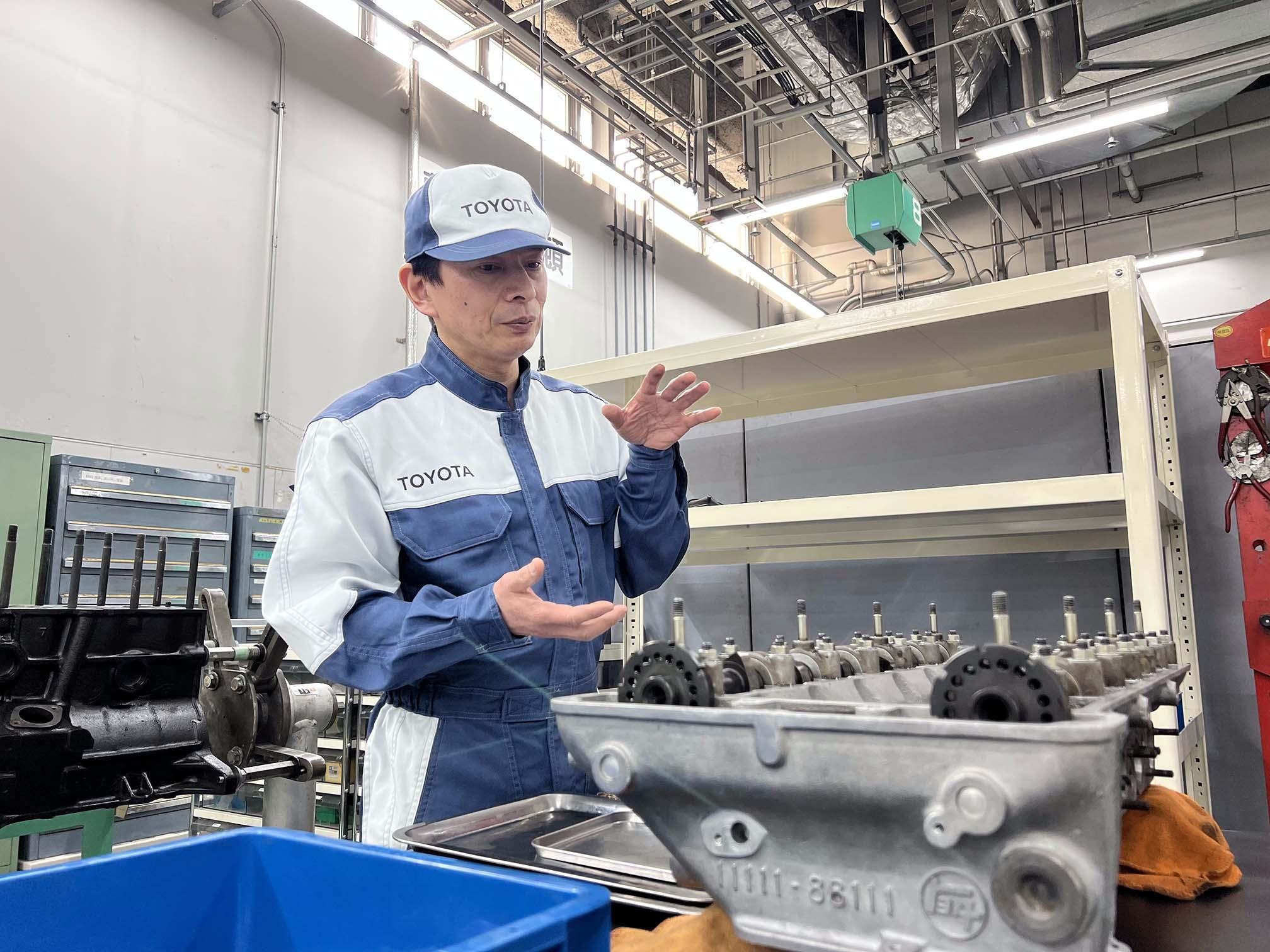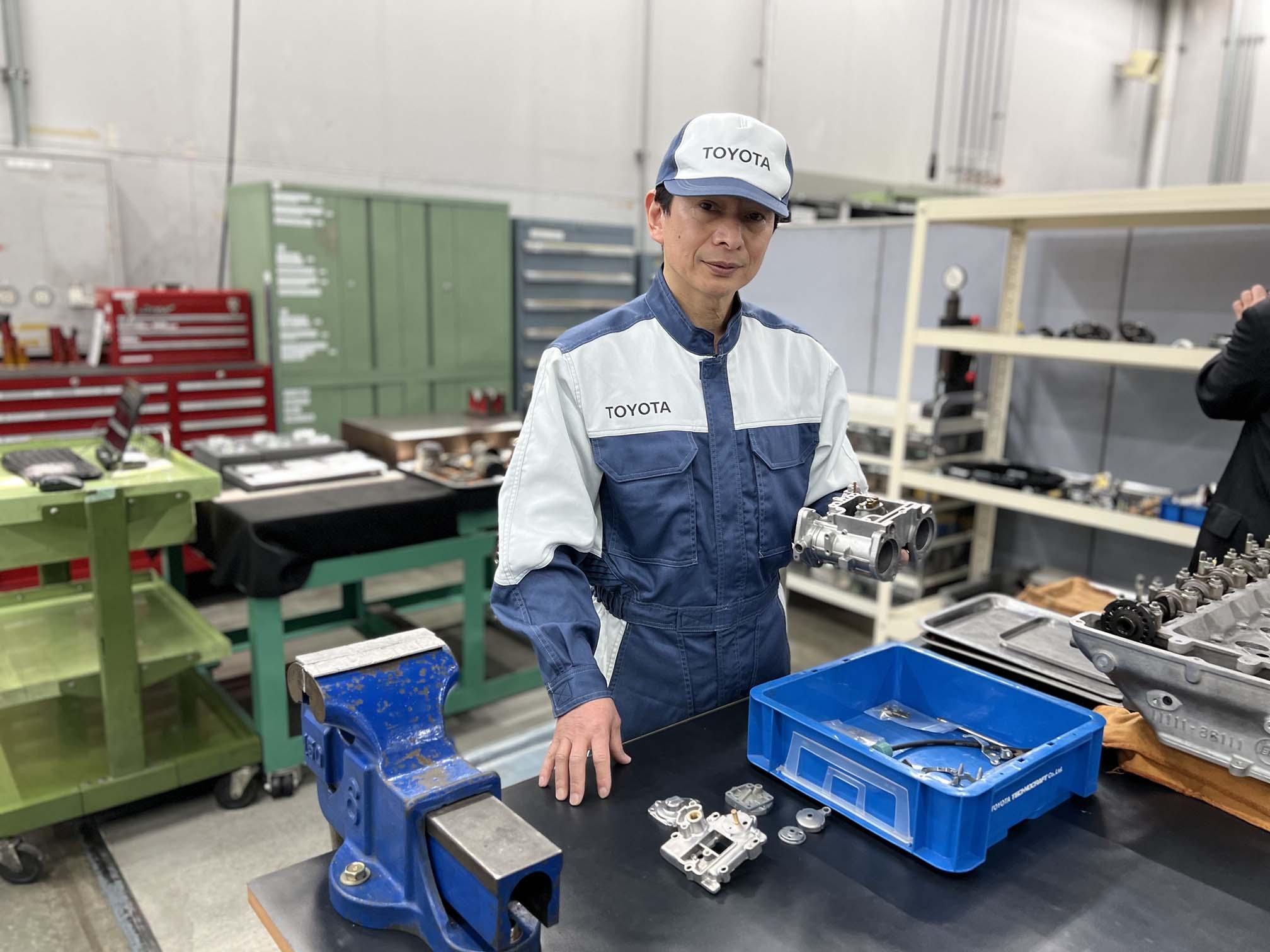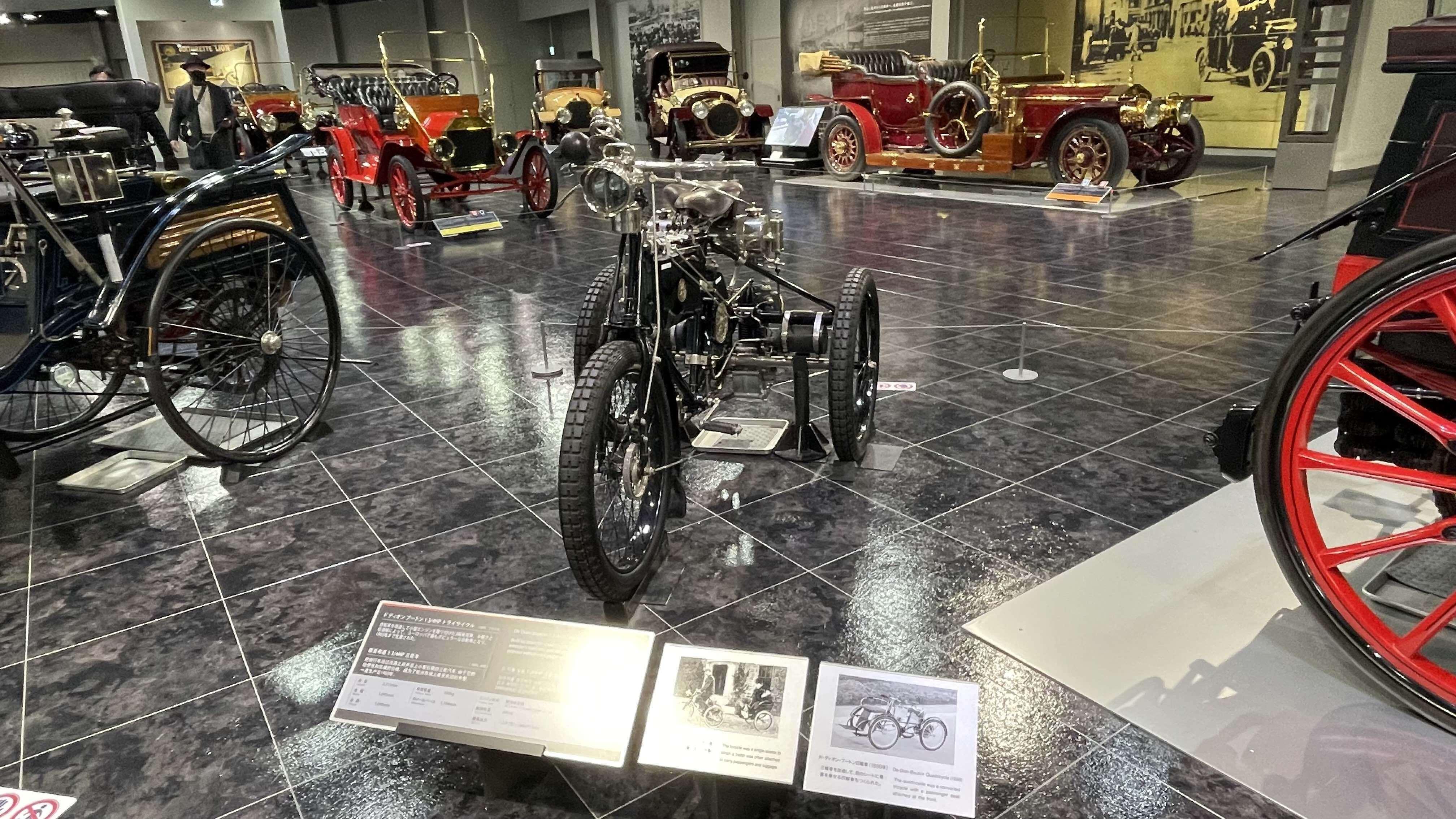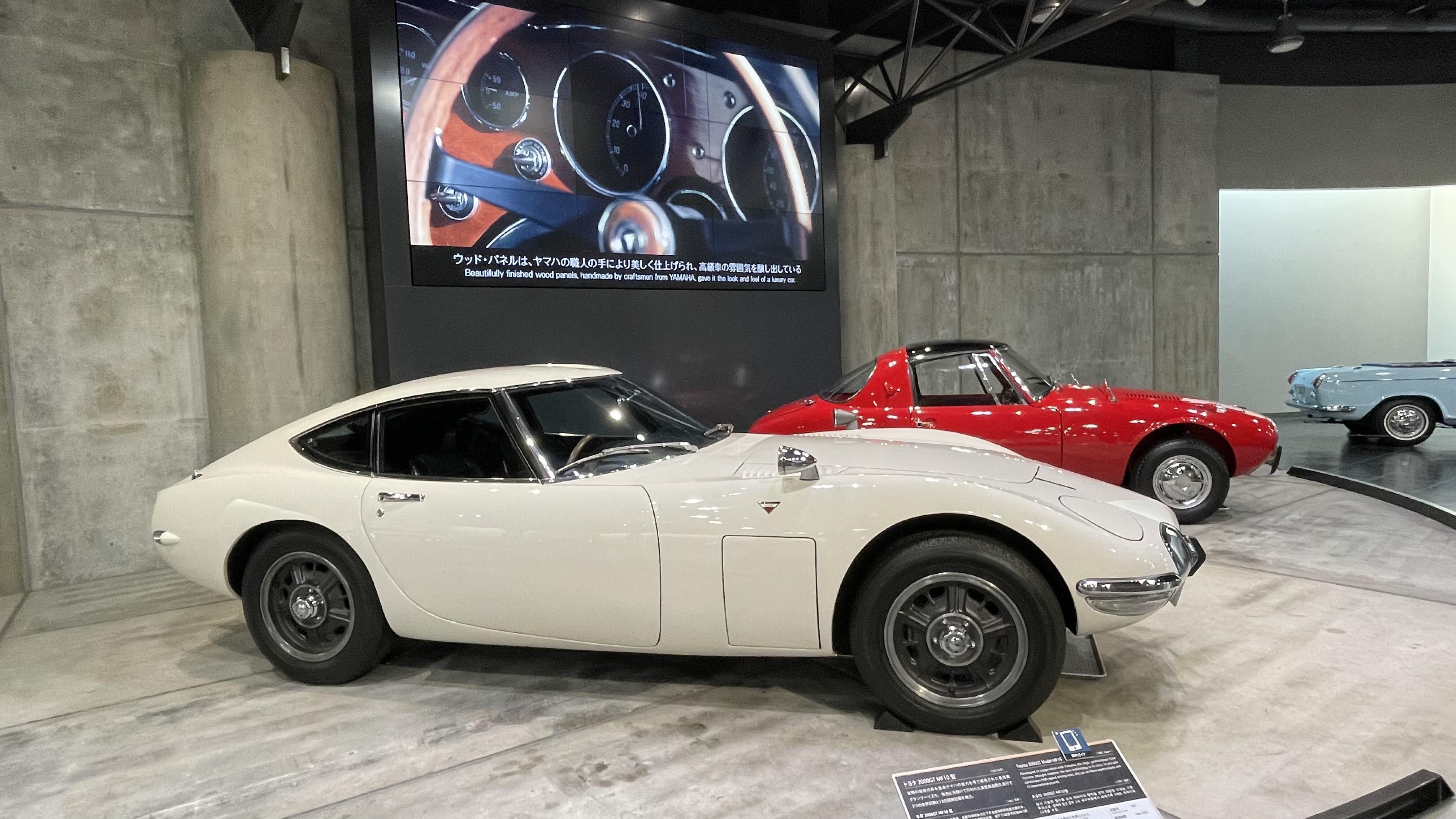
This two-part article features Koji Okada, an auto mechanic and master restorer who is using his exceptional skills and experiences in bringing legendary Toyota 2000GTs back to life.

Handwork still plays an important role in today’s car manufacturing even as technology like 3D printing offers more advanced methods. This series features craftsmanship of Japanese monozukuri (making things) through interviews with Toyota’s car-making masters.
This article introduces master of restoration, auto mechanic Koji Okada.

#9: Master restorer Koji Okada returns legendary sports cars to their glory days
Project General Manager, Service Division, Toyota Met-Logic
Mechanics sustain the life of a car
There are many car-making experts with exceptional skills and expertise in Toyota’s group companies. A prime example is Koji Okada, part of the servicing team at Toyota Met-Logic and a master restorer for Toyota’s first genuine sports car, the 2000GT.

A car is made up of over 30,000 parts, all of which must be perfectly in sync for it to run, something worthy of these machines being called “precision instruments on wheels.”
And yet, no machine lasts forever. Accelerating, turning, and braking all place severe stress on parts, while oil seals and rubber parts deteriorate over time. Parts eventually break down and the car, either gradually or abruptly, could lose basic functionality.
This is where vehicle maintenance comes in. The job of auto mechanics offering routine inspections and servicing is to ensure that a car continues to perform as designed for as long as possible by regularly fixing or replacing parts.
Restoration brings treasured cars back to life

Restoration in particular requires the skill of a true master of maintenance work.
Automakers generally supply replacement parts for around a decade after a model’s production ends, making the parts harder to obtain beyond that period. Resource conservation efforts have recently led to the widespread use of recycled parts from non-roadworthy cars. And yet, for older models or those with smaller production runs, spare parts are fewer in number and more difficult to find. This creates obstacles for maintenance and repair, shortening the car’s lifespan.
New models inevitably supersede the old. Yet many car lovers are dedicated to making sure their cherished machines outlive them. Certain cars deserve to be passed on to future generations as industrial and cultural heritage, too.
Restoration serves the needs of such car owners and museums. Restorers return a car to as close as possible to its former beauty and function with special techniques. In particular, a full restoration involves stripping the vehicle down to the last screw and replacing any available parts. Mechanics also have to manufacture non-replaceable parts from scratch at times. Such work demands extensive model-specific knowledge, advanced skills, and a wealth of experience.
Japan currently has about 330,000 auto mechanics, yet only a tiny fraction can perform restorations. This is the realm of true masters, and that’s why Koji Okada is called Toyota’s master restorer.
A full restoration of the legendary Toyota 2000GT
Okada’s current project is a full restoration of Toyota’s legendary and first genuine sports car, the 2000GT.
The sporty two-seater was in production for just three years, from May 1967 to August 1970. Only 337 were ever produced, including prototypes. More than half a century on, the 2000GT still has passionate fans around the world.

The car’s most striking feature is its elegantly sleek form, an unforgettable exterior design by Toyota designer Satoru Nozaki.
The Toyota 2000GT also stood out for its advanced mechanics, including an all-synchromesh five-speed manual transmission for precise gear changes; a four-wheel double-wishbone suspension with coil springs for optimum road-holding; four-wheel disc brakes for high-speed driving; and the direct, crisp feel of rack and pinion steering.
These internals were capped off with ultra-lightweight magnesium alloy wheels and retractable headlights for a sporty low-front profile. None of these advanced features had ever appeared before on a Toyota production car. It would take another two decades for them to become standard among other Toyota models. In other words, the 2000GT was 20 years ahead of its time.
Most cutting-edge of all was the 2-liter, inline 6-cylinder 3M engine developed with Yamaha Motor. It was Toyota’s first engine with a DOHC configuration, a square type with equal bore and stroke generating 150ps at 6,600rpm. This setup put the 2000GT among the world’s top sports cars of its time, with a top speed of 220km/h and acceleration of 15.9 seconds for 0-400m and 8.6 seconds for 0-100km/h.
The car competed in numerous races in Japan and the U.S. even before its official release. It also set 13 class records and three world records in speed trials.

Yamaha also took charge of manufacturing the vehicle. Unlike other production cars, the body panels meld seamlessly with the three-dimensional curved windshield, thanks to handwork by skilled sheet-metal craftspeople. The stunning interior is also notable for its instrument panel, steering wheel, and other wooden components crafted with the expertise of parent company Nippon Gakki (now Yamaha).

These specs came with a correspondingly hefty price tag of 2.38 million yen, which today would be around 20 million yen. Yet even then it was a bargain, given the car’s features and performance, with Toyota said to have made no profit on sales of the model.
Koji Okada is working on a full restoration of this unique car together with a colleague. “The 2000GT still stands out as something special to me as I’m part of the supercar generation,” tells Okada. “A full restoration will take us well over a year. That may sound far too slow, but that’s how long it takes to pull apart every last screw and put it all back together.”
So, what exactly does a Toyota 2000GT full restoration look like? Part two of this article showcases the master restorer at work.
(Text & photos: Yasuhito Shibuya)
Note: Toyota Met-Logic does not accept requests from individual customers or automobile service providers

